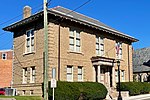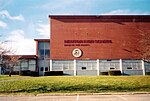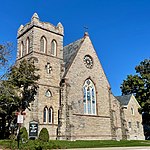Newton, New Jersey

Newton, officially the Town of Newton, is an incorporated municipality and the county seat of Sussex County in the U.S. state of New Jersey, situated approximately 60 miles (97 km) northwest of New York City. As of the 2020 United States census, the town's population was 8,374, its highest decennial population ever, an increase of 377 (+4.7%) from the 2010 census count of 7,997, which in turn reflected a decrease of 247 (−3.0%) from the 8,244 counted in the 2000 census.One of 15 municipalities in the state organized as a town, the municipal government operates under a council-manager structure provided by the Faulkner Act, or Optional Municipal Charter Law. Newton was incorporated by an act of the New Jersey Legislature on April 11, 1864, from portions of Newton Township, which was also partitioned to create Andover Township and Hampton Township, and was then dissolved. Additional land was acquired from Andover Township in 1869 and 1927, and from Fredon Township in 1920.
Excerpt from the Wikipedia article Newton, New Jersey (License: CC BY-SA 3.0, Authors, Images).Newton, New Jersey
Madison Street,
Geographical coordinates (GPS) Address Nearby Places Show on map
Geographical coordinates (GPS)
| Latitude | Longitude |
|---|---|
| N 41.051487 ° | E -74.753601 ° |
Address
Madison Street
Madison Street
07460
New Jersey, United States
Open on Google Maps







